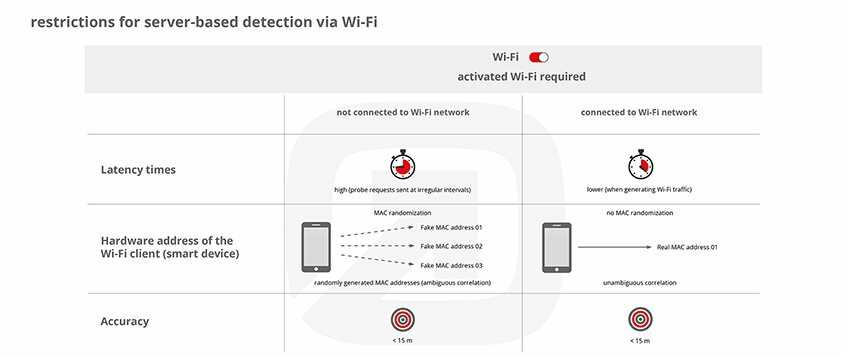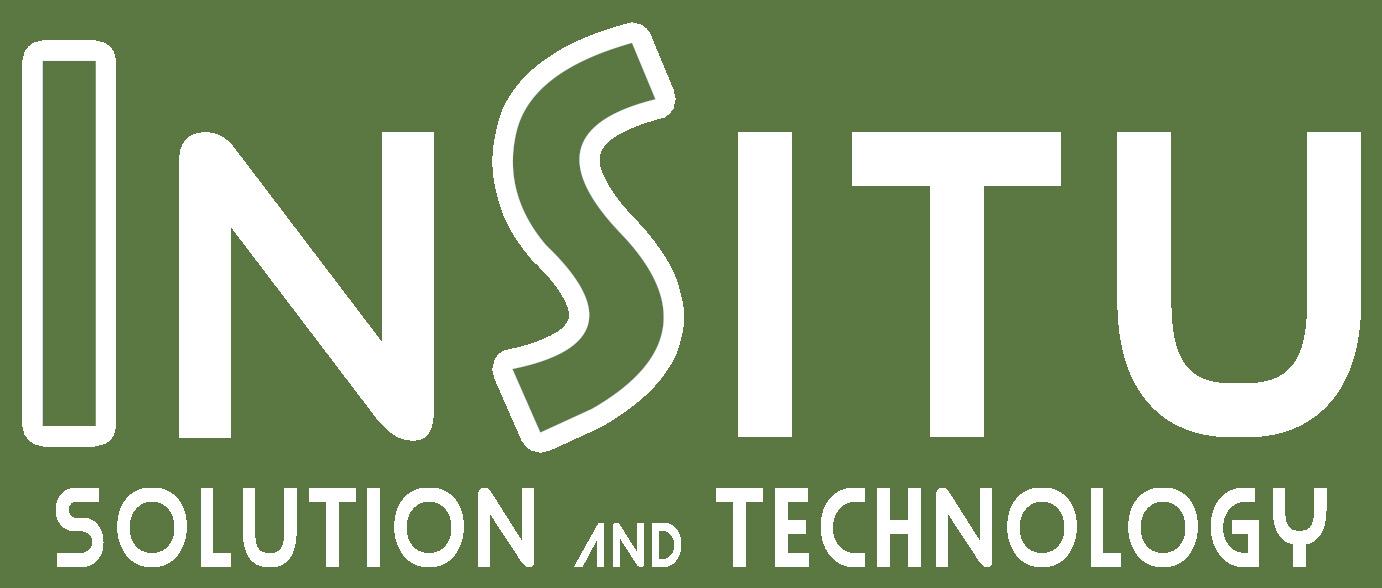Indoor Positioning, Tracking and Indoor Navigation with Beacons
Indoor navigation with beacons (the most common types are the iBeacon and Eddystone) offer decisive advantages for projects that are dependent on high accuracy and want to include Apple devices. Beacons enable indoor navigation when used in a client-based procedure, for example for airline passengers using an app – cross-platform and with an accuracy of up to 1 meter. Server-based tracking of persons or goods (beacon tracking) can be realized using appropriate receiver hardware (e.g. infsoft Locator Node, Cisco, Aruba). For this purpose, the beacon is attached to the asset to be tracked or carried by the person to be located. While tracking with well-established Bluetooth Low Energy (Bluetooth 4.0) beacons offers accuracies of a few meters, the new Bluetooth 5.1 standard opens up new perspectives for accuracies in the submeter range. These prospects are based on the "direction finding" function of Bluetooth 5.1, which enables determining the direction of radio signals.
Mounting of beacons is simple and extremely flexible. The housing is available in different colors so that the devices can be integrated unobtrusively and easily into any environment. The Bluetooth Low Energy (BLE) technology enables battery operation over two to eight years without having to access an external power supply. Beacons can also be connected to the power supply or use the power supply from the lighting. Paper-thin beacons with a printed battery are ideal for very discreet and space-saving installations, for example, on ISO cards or on advertising materials. They have a battery life of three to four days. The Beacon Management tool integrated into infsoft systems makes beacon management and monitoring easy.
Beacons can also provide sensor data. They may include sensor capabilities in order to allow the detection of movement (accelerometer), temperature, humidity, air pressure, light, and magnetism. This makes them particularly suitable for applications in the field of home and office automation, healthcare, retail, and industry. More on condition sensors
Functionality of Bluetooth Low Energy Beacons
Bluetooth beacons are small radio transmitters that send out signals in a radius of 10-30 meters (interior spaces). The advantages of beacons are obvious: They are cost-effective (three to thirty euros), can be installed with minimal effort, determine a position accurately up to 1 meter and are supported by many operating systems and devices. The BLE (Bluetooth Low Energy) standard is also very energy efficient. Beacons can be used for both client-based as well as server-based applications. With beacons it is possible to detect the current floor.
CLIENT-BASED

If the positioning data should be directly displayed on a mobile device (smartphone), the smartphone receives Bluetooth signals from beacons installed in the building and uses the signal strength measurement for localization. The device can also transfer the data to the infsoft LocAware platform®, where it is intelligently processed. The accuracy of a client-based procedure is 1-3 meters, the range up to 30 meters.
SERVER-BASED

If the positioning data should be directly displayed on a mobile device (smartphone), the smartphone receives Bluetooth signals from beacons installed in the building and uses the signal strength measurement for localization. The device can also transfer the data to the infsoft LocAware platform®, where it is intelligently processed. The accuracy of a client-based procedure is 1-3 meters, the range up to 30 meters.
Bluetooth Low Energy beacons are available from numerous vendors and come in various shapes and sizes for different use cases. Using the industry standard Bluetooth Smart, the solutions of infsoft are compatible with beacons of all manufacturers. infsoft does not produce beacons itself, but we are happy to put you in contact with corresponding providers.
Parameterization and Interferences of Beacons
Beacons have specific indicators that can be used for allocation, differentiation and parameterization. For iBeacons, these include UUID (association to a superordinate group, e.g. "Frankfurt Airport"), Major (association to a specific group, e.g. "Terminal 1"), Minor (identification of several beacons, e.g. "Beacon #10"), TX Power (signal strength) and transmission interval.
Eddystone beacons have several "frame types" that differentiate them from the iBeacon: Eddystone UUID: (16-digit ID that indicates the group association and identity of an individual beacon), Eddystone URL (freely selectable URL) and Eddystone TLM (current status of the beacon).

Bluetooth beacons normally do not affect other radio networks (interference) and they also do not interfere with medical devices. However, if you install beacons in a space with lots of Wi-Fi signals (for example, at a trade show), then interference can occur because BLE and Wi-Fi share the same frequency range (2.4 GHz). The problem can be easily avoided here by not using channels 2, 3, 4, 13 and 14 when configuring the Wi-Fi and using 1, 6, 7, 8, 9, 10, 11 and 12 instead. Bluetooth uses the remaining available channels to capacity in a uniform manner (frequency hopping). Advertising channels that are used for positioning are marked in red in the graphic. The blue-colored channels are reserved for additional functions such as a temperature sensor.
There are attenuations in the signal dispersion within buildings for BLE beacons. Corresponding characteristics are taken into account when installing and during parameterization.
Low attenuation properties: Wood, synthetic materials, glass
Medium attenuation properties: Brick, marble
High attenuation properties: Plaster, concrete, coated glass surfaces (bulletproof versions, etc.)
Extremely high attenuation properties: Metal, water (this includes people and groups of people)
Use Cases for Indoor Positioning with Beacons
There are multiple application scenarios for indoor positioning with Bluetooth Low Energy beacons. Here are some examples:




